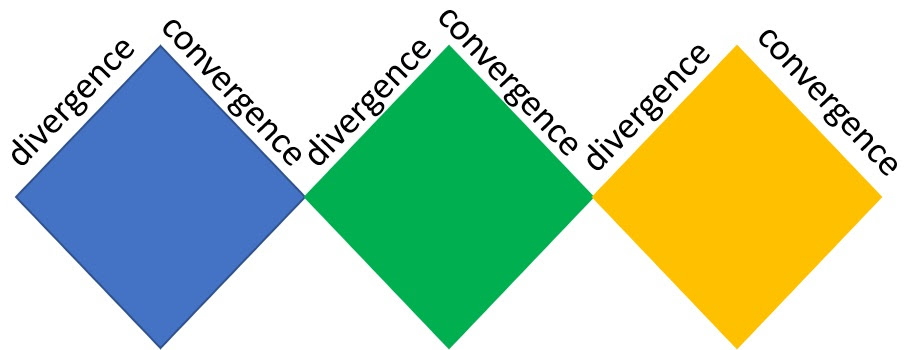Some of the patterns listed as i observed from many outstanding managers/leaders.
- Clarity on the problem & delegation level
- Communication & expectation setting on solving the problem
- Switching between micro & macro management of detailing
- Space for risk-taking & learning attitude to deal with risk and failure
Having discussed the first two patterns, let us understand the ability to switch in and out on the management of details.
Switching between micro & macro management :
Influential managers/ leaders are aware of the management process and can converge and diverge on the problem-solving process.

Some people take an extreme stand on macro management and leave the execution of tasks to others, assuming they empower others. Some people try to get into all the nitty-gritty of the job, thinking they help others get things done. Each stand affects the problem-solving and decision-making capabilities of people reporting to them.
Consider the case, as i observed,
One of the business heads is balancing the micro and macro level of management. His style of leadership makes his team get things done with little effort.
For example, when he wants to conduct an event, he calls his team, explains his end objective, and leaves it to the team on execution details (Macro management). He is disciplined enough to review the progress. When the team raises some concerns, say cross-functional conflict, he gets into detailing (micromanagement) and clears the path (macro). It looks like he is nowhere connected to the team, and at the same time, he is available for guidance when required. His style is a standard management process, but there is a subtle difference between being in and out of the task and empowering the people. It is an art.
Because of his switching between macro and micro-management styles, the team feels comfortable working with him and problem-solving, and decision-making capabilities are enhanced among the group, as i witnessed.
Balancing macro and micro-management calls for introspection of our thought process towards work and people. However, the ability can be learned.
Have a great week ahead.



 Sometimes they spend time with the team to resolve the problem. They display both distant and friendly behavior towards problem-solving. Uncertainty in predicting the behavior.
Sometimes they spend time with the team to resolve the problem. They display both distant and friendly behavior towards problem-solving. Uncertainty in predicting the behavior. is in solving an issue of any kind and operating with the belief that their core responsibility is to solve the problem irrespective of assigning ownership.
is in solving an issue of any kind and operating with the belief that their core responsibility is to solve the problem irrespective of assigning ownership. 

 )
) )
)

